- Home
- Knowledge library
- The growth stages of cereals
The growth stages of cereals
It is useful to break down the cereal life cycle into various growth stages. By understanding the main crop development stages, it becomes easier to measure crop performance and informs husbandry choices.
What are growth stages and why are they important?
The BBCH (Biologische Bundesanstalt, Bundessortenamt und CHemical Industry) scale is the main system in cereals, based on ten developmental phases – the principal growth stages (GS). Understanding the system can aid with the benchmarking of crop development and help assist management decisions. For example, this uniform coding system features on plant protection product labels.
 Gary Naylor Photograpy.JPG) Gary Naylor Photography
Gary Naylor Photography
GS0: Germination and emergence
GS00: Dry seed (caryopsis)
GS01: Beginning of seed imbibition
GS03: Seed imbibition complete
GS05: Radicle emerged
GS06: Radicle elongated, root hairs and/or side roots visible
GS07: Coleoptile (pointed protective sheath covering the emerging shoot) emerged
GS09: Emergence. Coleoptile penetrates soil surface (cracking stage)
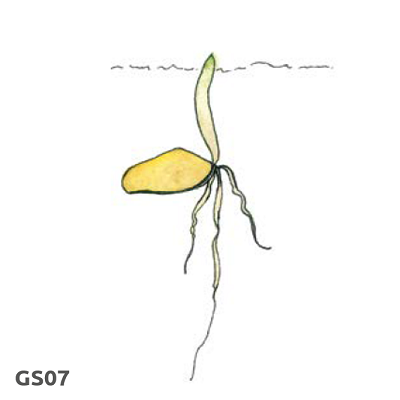 AHDB
AHDB
GS1: Leaf development (seedling growth)
GS10: First leaf through coleoptile
GS11: First leaf unfolded (ligule visible)
GS13: Three leaves unfolded on the main shoot
GS15: Five leaves unfolded
GS19: Nine or more leaves unfolded on the main stem
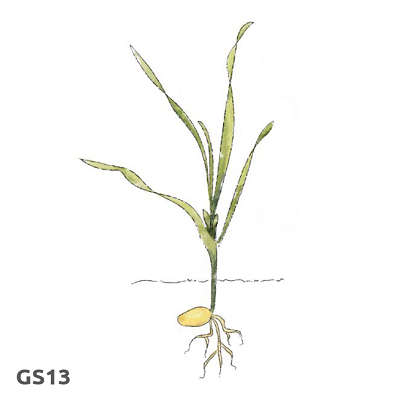 AHDB
AHDB
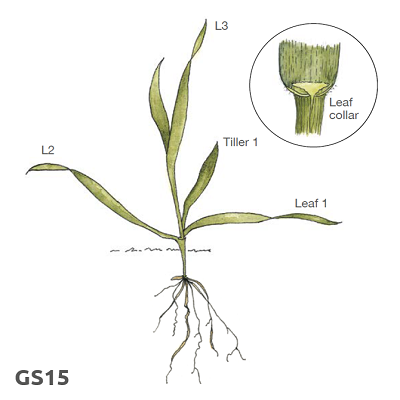 AHDB
AHDB
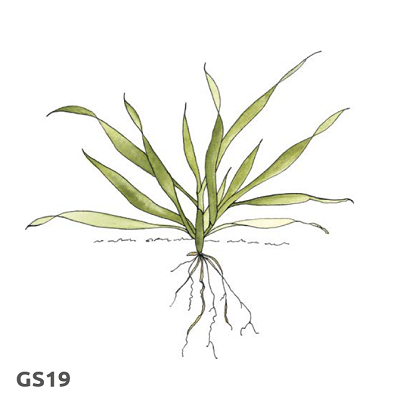 AHDB
AHDB
GS2: Tillering (production of side shoots)
GS20: Main shoot only (no tillers)
GS21: Main shoot and one tiller
GS23: Main shoot and three tillers
GS25: Main shoot and five tillers
GS29: Main shoot and nine or more tillers
GS3: Stem elongation
GS30: Ear at 1cm (pseudostem erect)
GS31: First node detectable
GS32: Second node detectable
GS33: Third node detectable
GS37: Flag leaf just visible
GS39: Flag leaf fully unrolled, ligule just visible
How to count cereal nodes
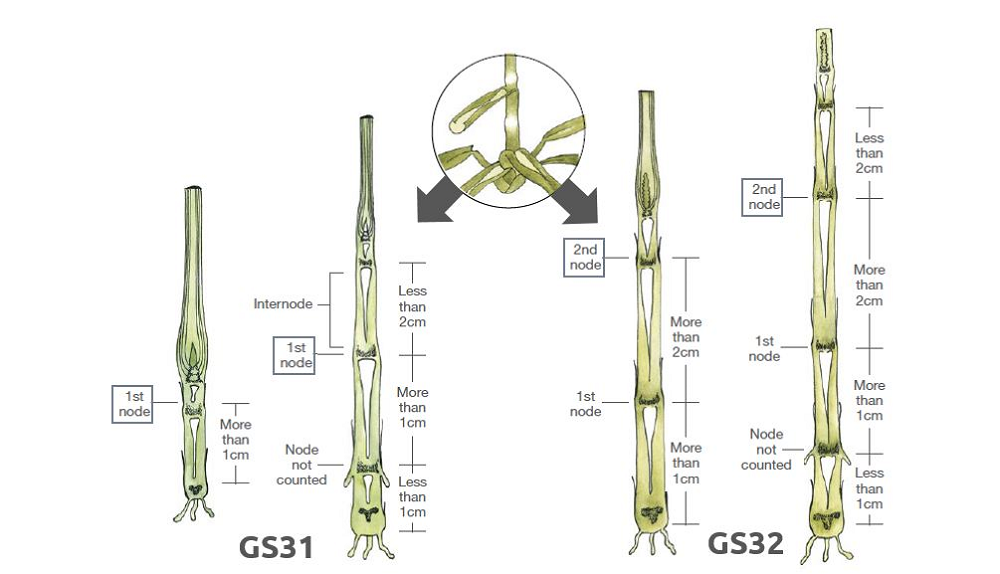 AHDB
AHDB
An internode is the part of a plant stem between two successive nodes. The first node detectable must be above an internode of at least 1cm*. The second and subsequent nodes detectable must be above an internode of at least 2cm. *Sometimes a node may be underground and bear roots. As long as the internode below it exceeds 1cm, count it.
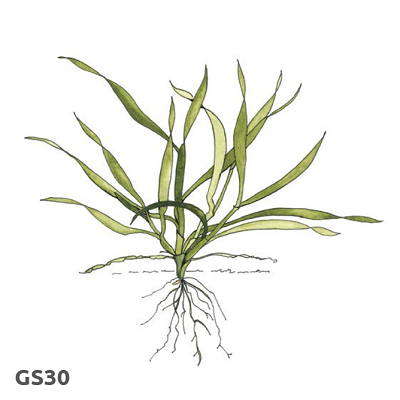 AHDB
AHDB
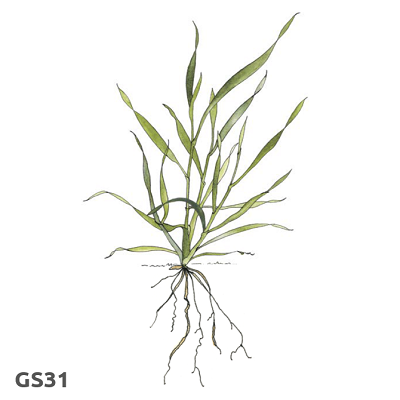 AHDB
AHDB
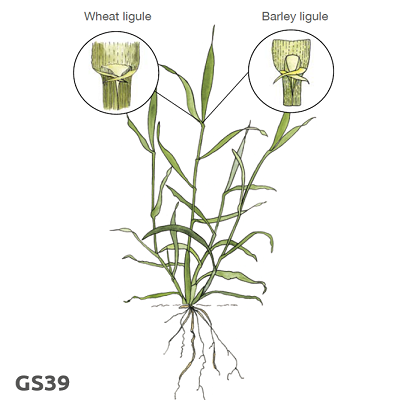 AHDB
AHDB
GS4: Booting
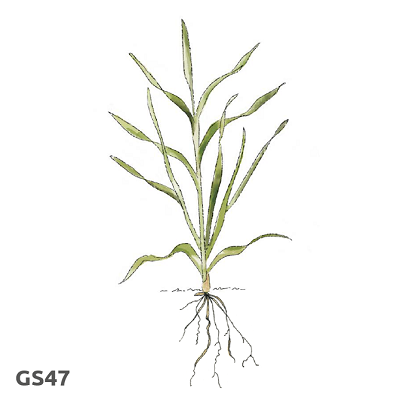 AHDB
AHDB
GS41: Flag leaf sheath extending (early-boot stage)
GS43: Flag leaf sheath just visibly swollen (mid-boot stage)
GS45: Flag leaf sheath swollen (late-boot stage)
GS47: Flag leaf sheath opening
GS49: First awns visible
GS5: Ear/Inflorescence emergence
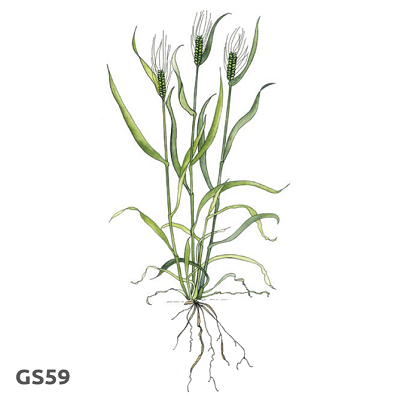 AHDB
AHDB
GS51: First spikelet of ear just visible above flag leaf ligule
GS55: Half of ear emerged above flag leaf ligule
GS59: Ear completely emerged above flag leaf ligule
GS6: Flowering/anthesis
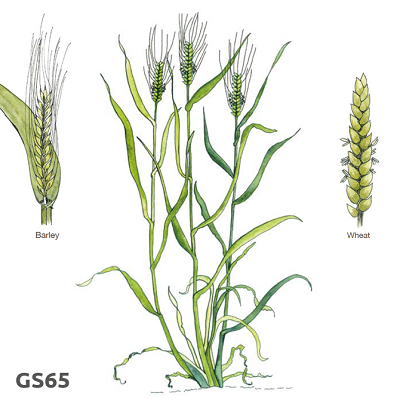 AHDB
AHDB
GS61: Start of flowering (first anthers visible)
GS65: Flowering halfway (50% of anthers mature)
GS69: Flowering complete (some dehydrated anthers may remain)
GS7: Milk/seed/grain/fruit development
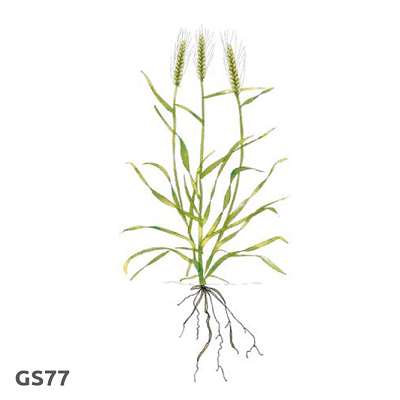 AHDB
AHDB
GS71: Watery ripe (first grains half final size)
GS73: Early milk
GS75: Medium milk (grain content milky, grains reached final size)
GS77: Late milk
GS8: Dough development
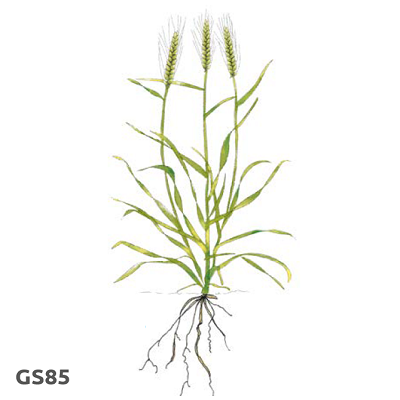 AHDB
AHDB
GS83: Early dough
GS85: Soft dough (content soft but dry)
GS87: Hard dough (thumbnail impression held)
GS89: Fully ripe (grain hard, difficult to divide with thumbnail)
GS9: Ripening/senescence
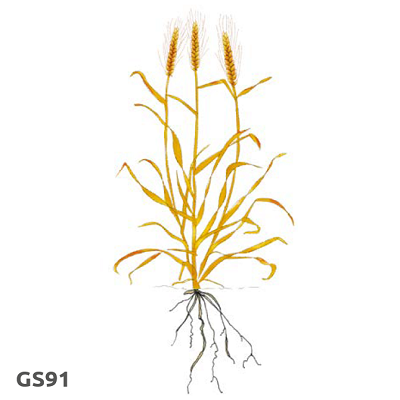 AHDB
AHDB
GS91: Grain hard (difficult to divide)
GS92: Grain hard (not dented by thumbnail)
GS93: Grain loosening in daytime
GS97: Plant dead and collapsing
GS99: Harvested product

